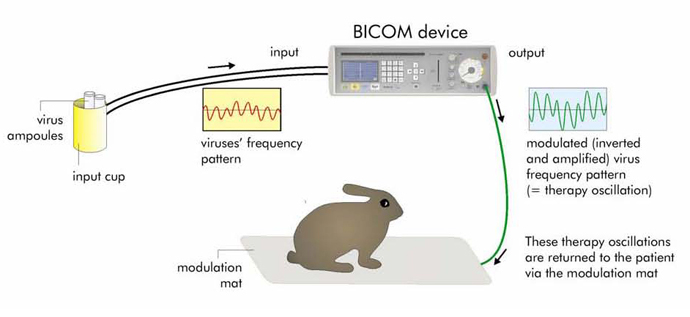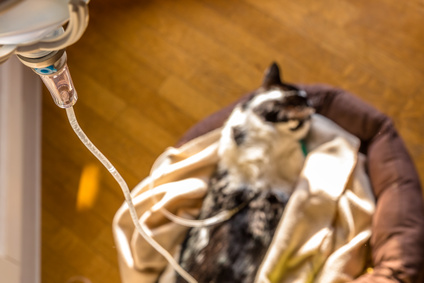Client Name: Dr. med. vet. Jochen Becker
Treatment with BICOM® bioresonance
One of the most common diseases in cats, especially with increasing age, is definitely chronic renal failure or CRF for short.
The first clinical symptoms of this disorder to be noticed include intermittent diarrhoea, vomiting and general malaise as well as a dull, generally matted coat, especially in the lumbar region.
Only as the disorder progresses to a more serious stage does the animal drink more and is a uraemic odour noticeable from the animal’s mouth.
Conventional medical blood tests and ultrasound scans of the kidneys reveal raised urea and creatinine levels in the blood.
In the case of very high creatinine and urea levels, the prognosis unfortunately tends to be extremely cautious as the disease takes a progressive course and increased serum levels can regrettably only be detected when both kidneys are 75% destroyed.
In conventional veterinary medicine, once the diagnosis is confirmed, an attempt is made to reduce the strain on the kidneys by selecting a diet specially created for this diagnosis. In such cases the vet also prescribes ACE inhibitors to lower blood pressure and dilate the vessels in the renal lobules, thus preserving their function, such as it is.
Bioresonance testing is able to detect deteriorating renal function and energy deficiency in the kidney eliminating organ, well before conventional medical diagnosis, and so allow treatment to be undertaken at a stage when the kidney cells are still capable of regenerating.
It is still quite possible to treat the condition with bioresonance when CRF has already been diagnosed by conventional medical methods. In this case too the operation of the eliminating organ can be improved and the underlying problem eliminated.
In the past 6 months 34 animals have come to my practice with a confirmed conventional medical diagnosis of CRF. About 30 of these sick animals had raised urea and creatinine levels. It was possible to restore these cats with bioresonance to such an extent that their urea and creatinine levels were back to normal in subsequent blood serum tests and the animals could return to a normal life once more.
A noticeable improvement in the cats’ general state of health could already be seen at the third bioresonance treatment session, out of a usual total of five or six sessions.
In most cases the raised blood count had dropped considerably four weeks after the fifth treatment.
One significant advantage of bioresonance, however, lies in the early identification of impaired renal function through bioenergetic testing of the eliminating organs using bioresonance.
Consequently, in my practice I offer my patients’ owners regular checkups of their clinically healthy animals to enable bioenergetic problems to be detected at a very early stage so that these can be treated before kidney disease occurs and is diagnosed conventionally.
The factors, which in my experience, most frequently cause CRF are above all heavy metals, such as mercury, for example. However fluorides also play an important part here. I can eliminate this specific contamination with the BICOM® device.




